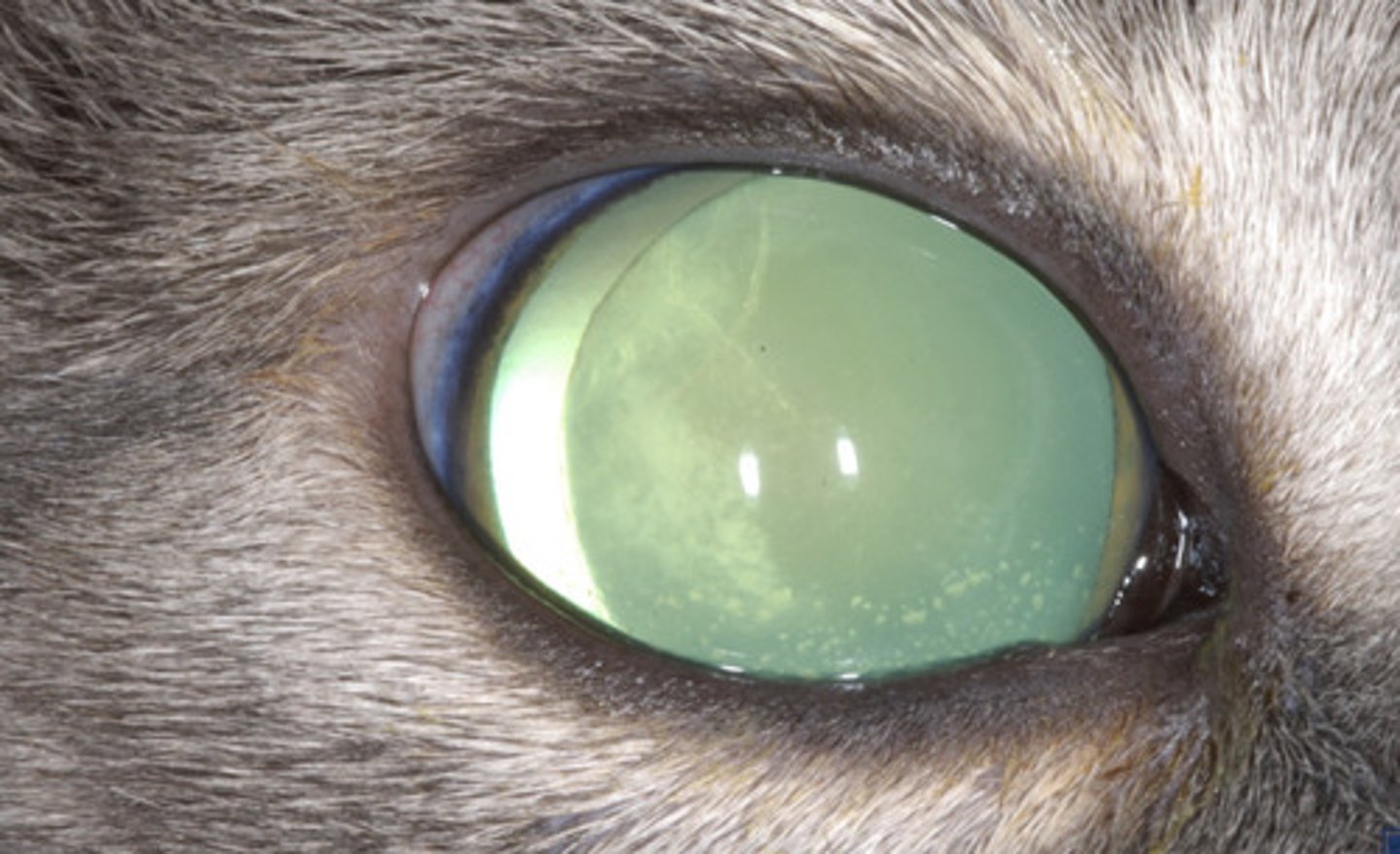Lecture Eight: Lens and Cataracts
1/60
There's no tags or description
Looks like no tags are added yet.
Name | Mastery | Learn | Test | Matching | Spaced |
|---|
No study sessions yet.
61 Terms
The lens is made of surface ectoderm, whereas most of the eye is made of neuroectoderm and mesoderm. So, it is seen as foreign antigen material, causing an inflammatory response.
Describe the embryology of the lens.
A = ciliary body
B = zonules
C = lens
Label this diagram.
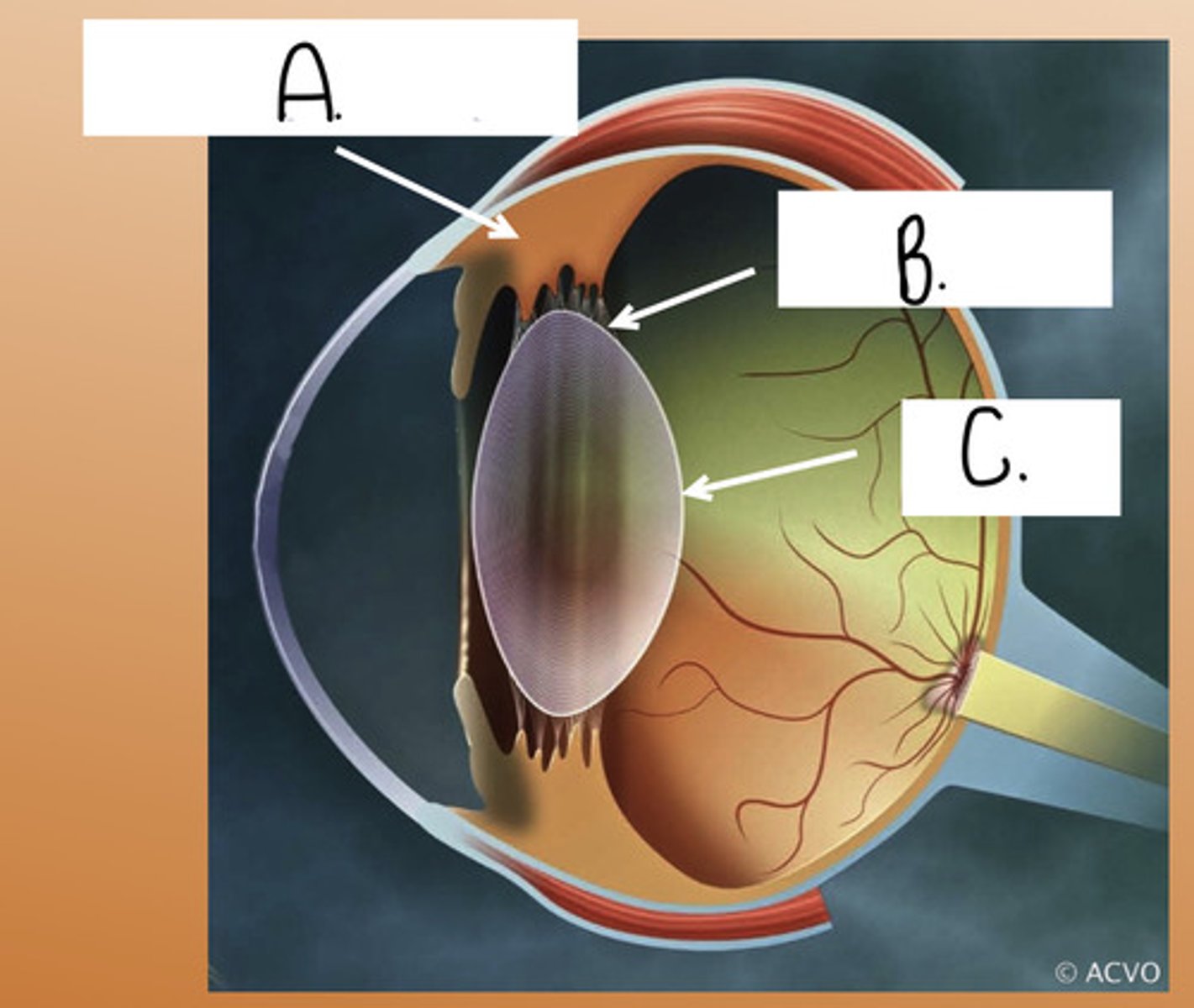
Anterior capsule
Which side of the lens capsule is thicker and has epithelial cells?
Posterior capsule
Which side of the lens capsule is thinner and has no endothelial cells?
Accommodation (changes shape or position to focus light on the retina, allowing visualization of near or far objects)
What is the primary function of the lens?
- Non-pigmented
- Avascular
- Precise organization of fibers
- Few organelles
- Relatively dehydrated
- Precise crystalloid protein ratios
How does the lens maintain transparency? (6)
1/3 of the way around the lens (normal to see Y sutures in cats and dogs)
Each suture extends how far around the lens?
Nuclear sclerosis
What am I describing?
- Lens fibers increase in density and become clinically apparent in the center of the lens
- compacted inward (lens nucleus) but remain normal
- Normal aging change
- Bilateral and symmetric
- Doesn't interfere (much) with vision
- Can visualize the tapetal reflex through it
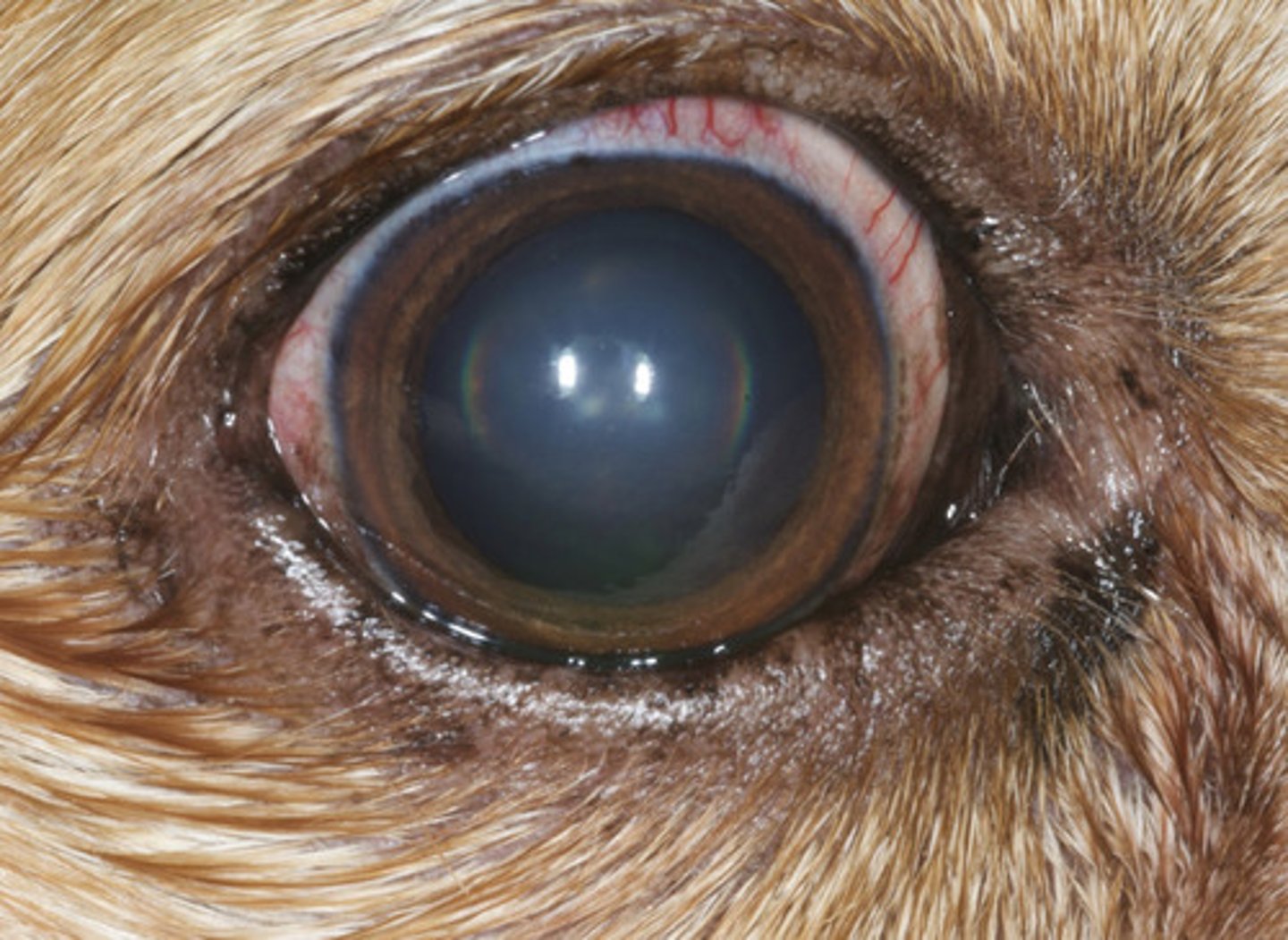
- You can look through nuclear sclerosis to the retina with an ophthalmoscope
- Nuclear sclerosis is bilaterally symmetrical
How can you differentiate nuclear sclerosis from a cataract?
Mydriasis (large pupil)
- Allows you to evaluate symmetry and location of the lens opacity
What is imperative to accurate lens diagnosis?
It doesn't (think of frosted glass — light still gets through)
How does cataract affect the PLR?
- Microphakia
- Spherophakia
- Colobomas
What are the diseases of shape of the lens? (3)
Cataract
What are the diseases of transparency of the lens? (1)
Subluxation and luxation
What are the diseases of position of the lens? (1)
False — it is NEVER normal.
T/F: it is normal to see the equator of the lens
Microphakia
What am I describing?
- Congenitally small lens
- Allows visualization of the lens equator and zonules
- Doesn't need treatment
- May be associated with cataract or other lens abnormalities
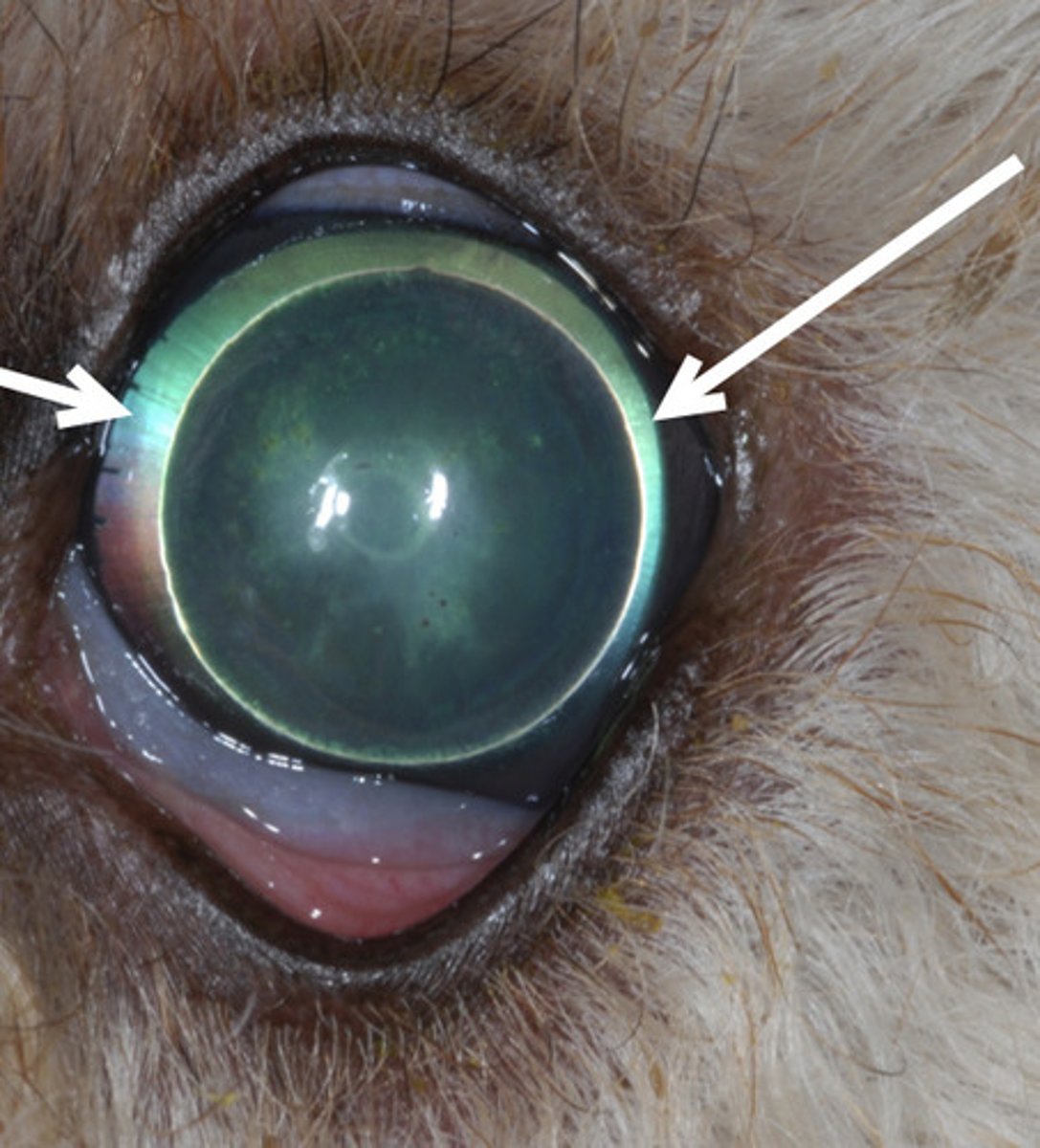
None
What is the treatment for microphakia?
Spherophakia
What am I describing?
- Congenitally round lens
- Frequently accompanies microphakia
- Need a slit lamp to diagnose
Coloboma
What am I describing?
- "Flattened" area of lens equator
- May be accompanied by dysplasia ciliary processes
- May be associated with progressive cataract
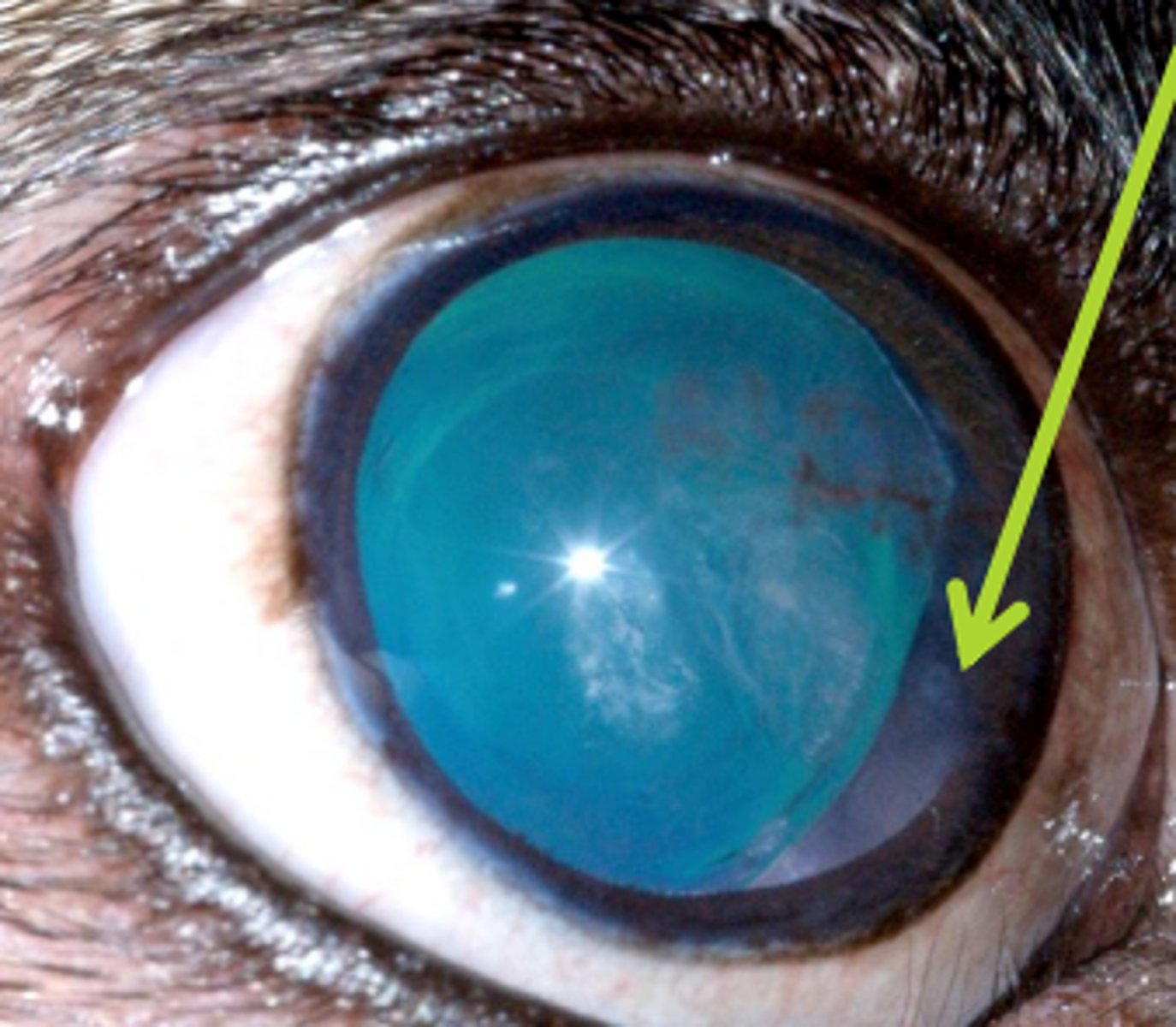
Cataract
Any opacity of the lens
- Anterior subcapsular
- Anterior cortical
- Equatorial
- Lamellar / perinuclear
- Nuclear
- Posterior cortical
- Posterior subcapsular
- Axial
What are the 8 location classifications of cataracts?
Incipient cataract
What am I describing?
- Cataract
- <10% of total lens volume
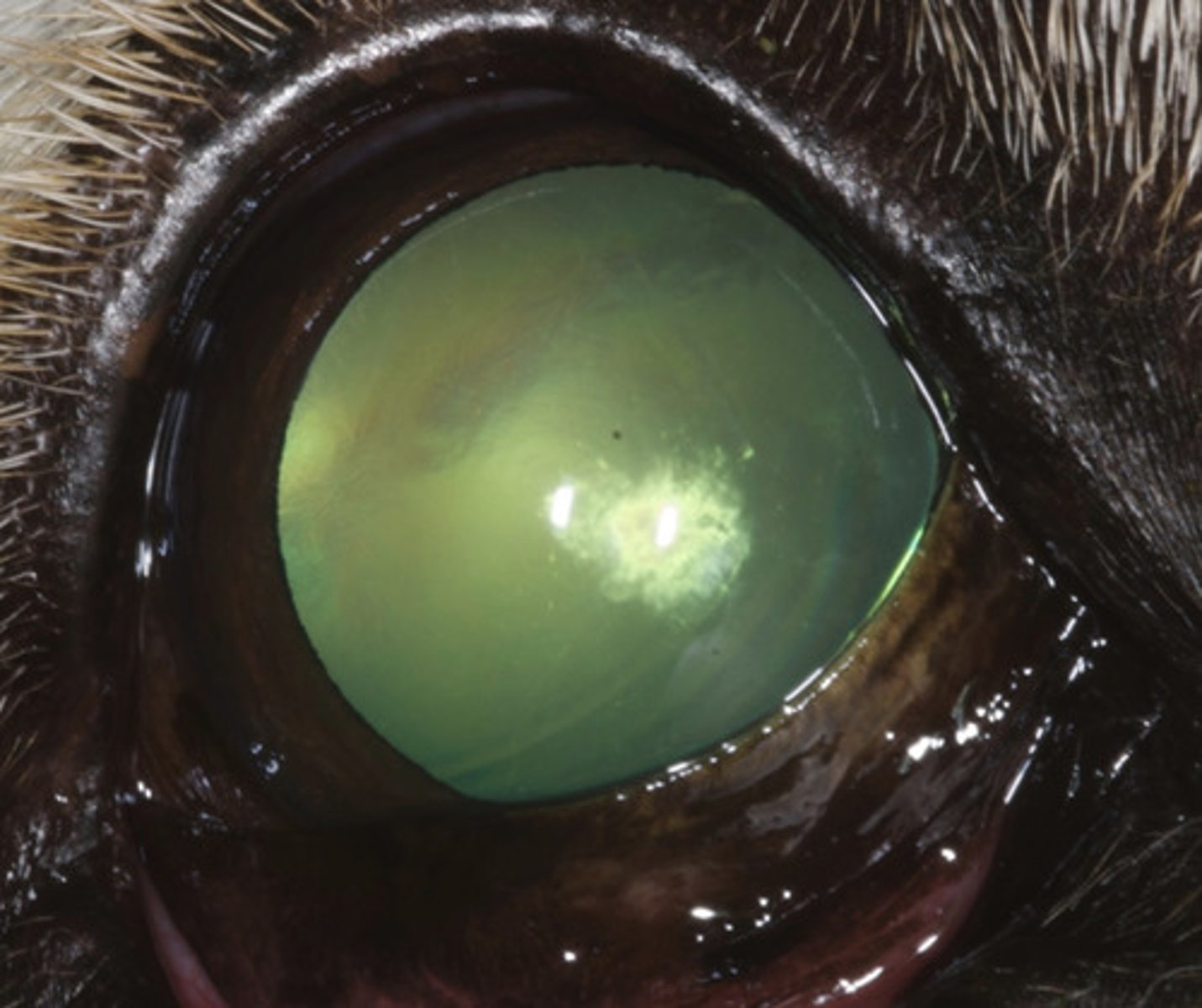
Immature cataract
What am I describing?
- Cataract
- 11-99% of total lens volume
- Further divided into early and late
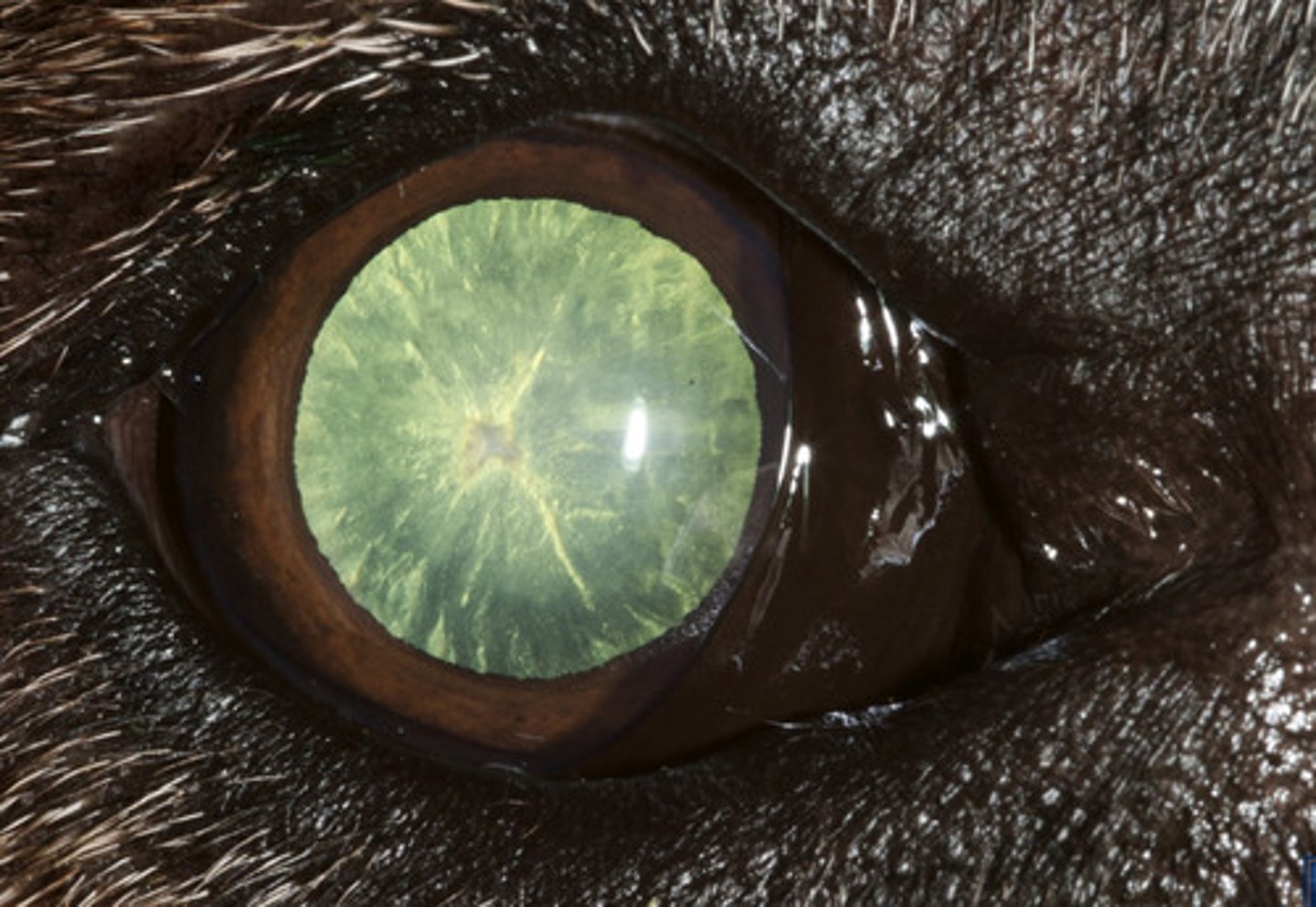
Mature cataract
What am I describing?
- 100% of lens is cataractous
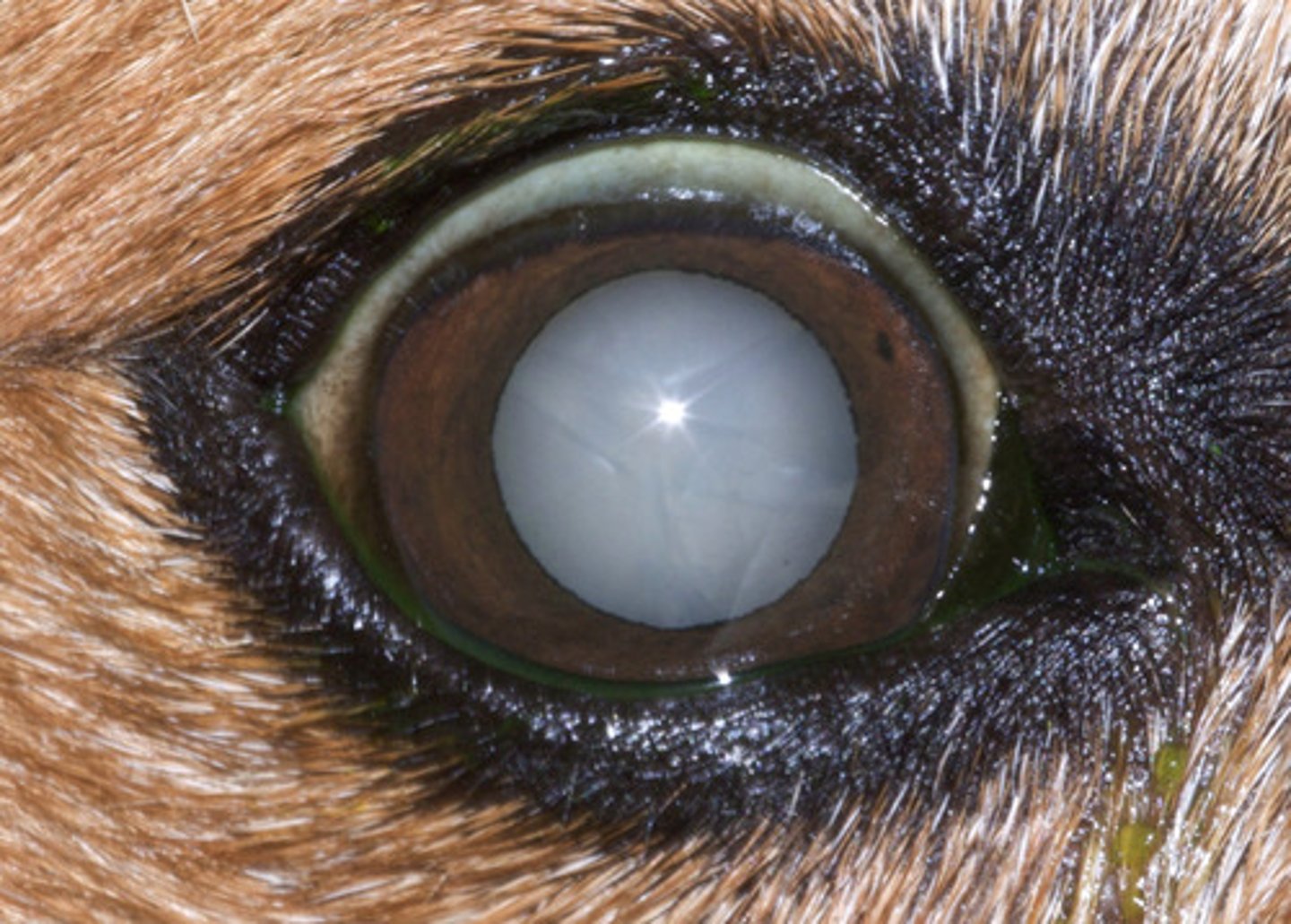
Immature cataract
What am I describing?
- Cataract
- 11-99% of total lens volume
- Further divided into early and late
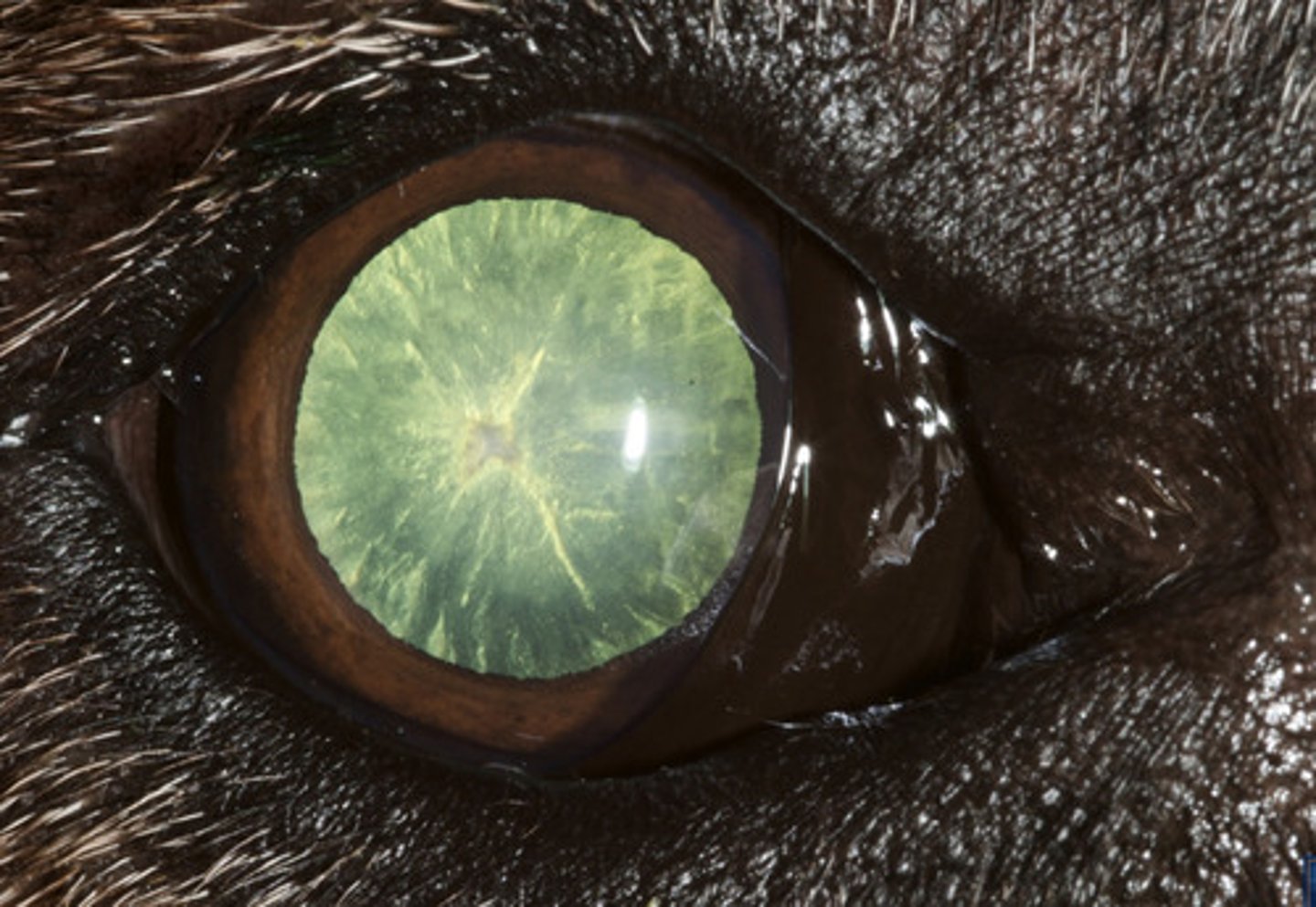
Hypermature cataract
What am I describing?
- Cataract
- Resorbtion of lens material
- Starting to shrivel up!
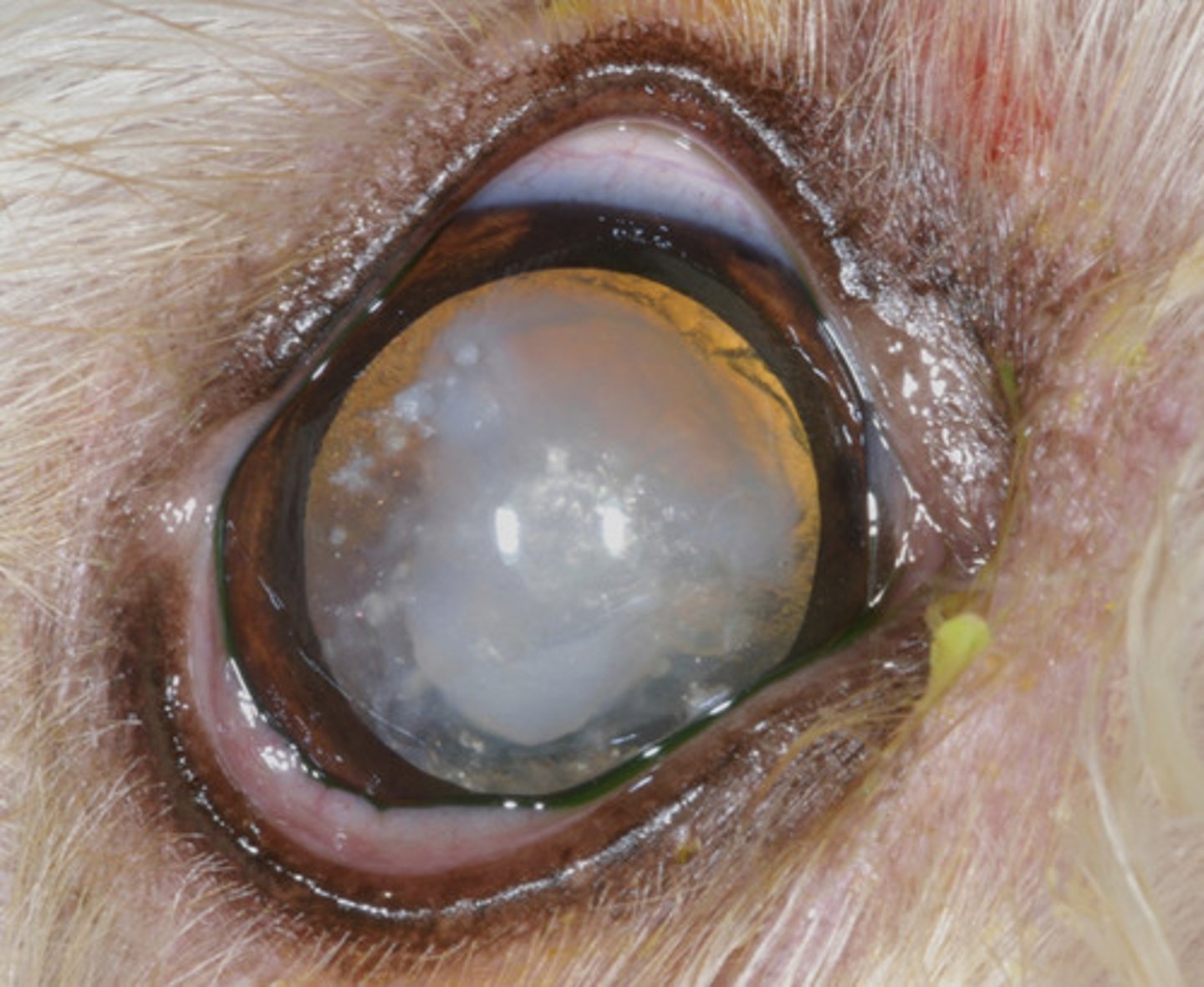
Morgagnian cataract
What am I describing?
- Cataract
- All cortical material has been resorbed, leaving behind nucleus
- liquified!
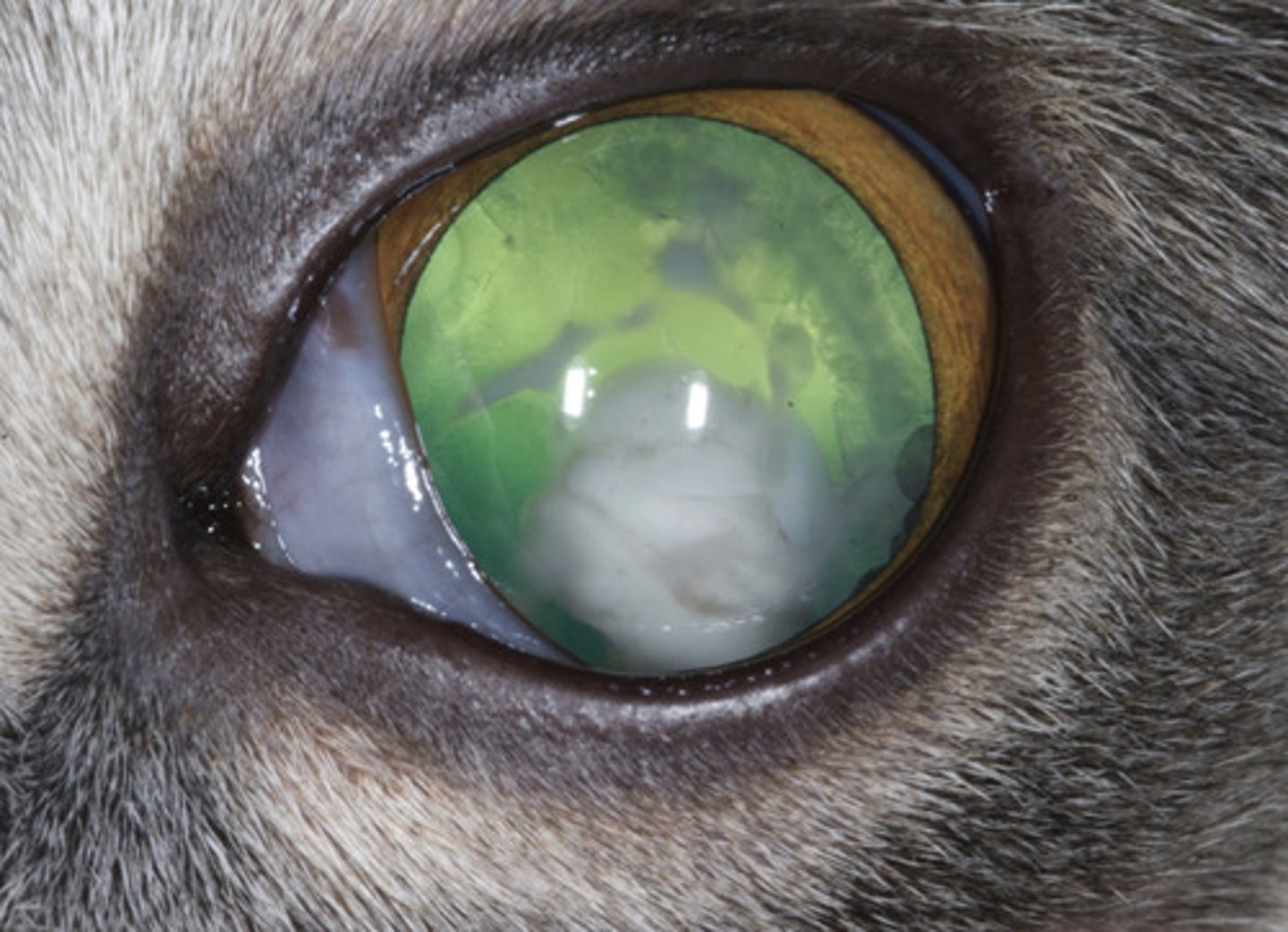
dilate, distance exam, examine in dark
Overall, how is a cataract examined?
Hereditary
What is the most common overall cause of cataracts in dogs?
Diabetes mellitus (85% of diabetic dogs develop cataracts within 18 months of diagnosis)
What systemic disease commonly causes cataracts in dogs?
senile
? animals generally get cortical/complete cataracts
- The normal glycolysis pathway is overwhelmed because of elevated glucose
- So, it shifts to the sorbitol pathway where aldose reductase is the rate limiting enzyme
- Results in a swollen, cataractous lens
- sutures a good indicator
Describe the pathophysiology of diabetic cataracts.
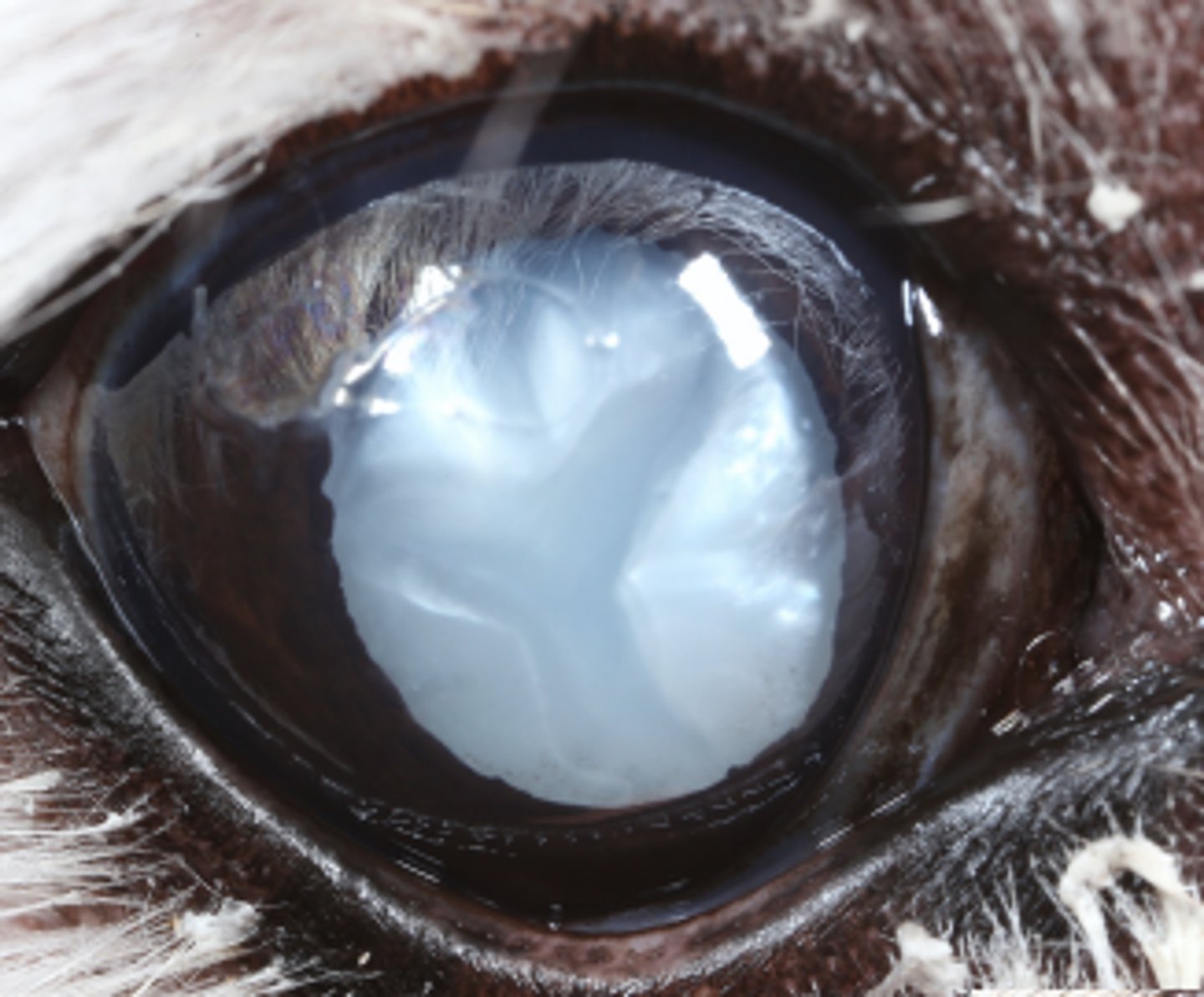
Start topical anti-inflammatories (NSAID) early
What should you do when you start to see cataracts in diabetic dogs?
scattered dots
what do you see with nutritional cataract?
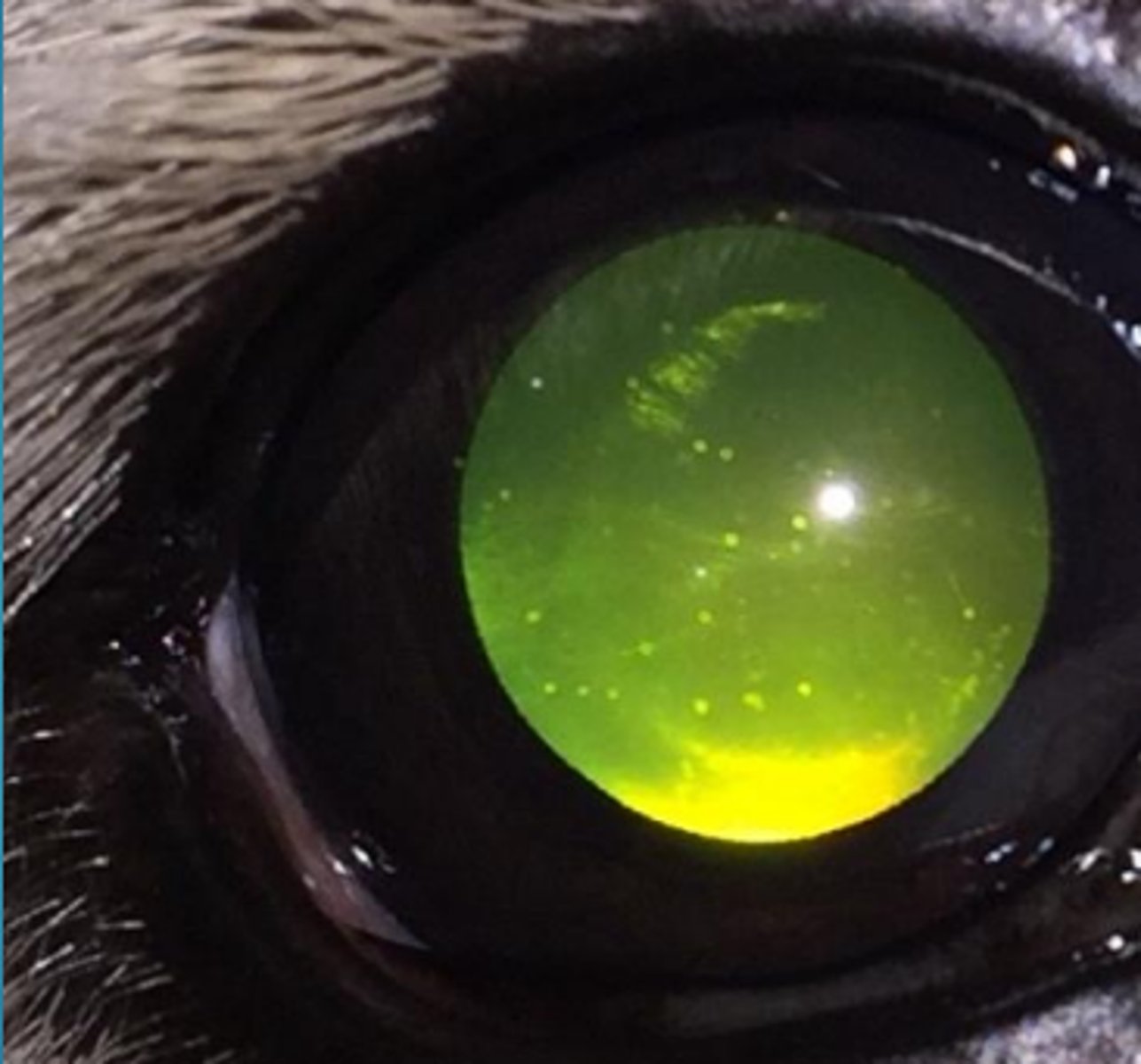
Penetrating trauma
(Blunt/penetrating) trauma is more often associated with cataractogenesis.
1. Chronic Uveitis - MOST COMMON CAUSE IN CATS
2. Retinal degeneration - posterior polar
3. Persistent hyaloid artery
4. Posterior synechia, PPM, etc.
Secondary cataracts can develop due to various ocular diseases that disrupt lens metabolism and transparency. These include ? (4)
Secondary to chronic uveitis*******!!!
What is the most common cause of cataracts in cats?
posterior polar
retinal degeneration =
1. Location within the lens
2. Extent of lens involved
3. Etiology
4. Age of onset - congenital, juvenile, adult, senile
5. Shape, appearance
Many ways to classify cataracts?
Active cataract formation/progression (often diabetic)
What does the presence of vacuoles indicate?

- rapid progression (often diabetic)
- Risk for rupture if severe - refer for surgery QUICKLY
Intumescent (swollen) cataract?
Phacoemulsification
- Make a 3 mm incision, use ultrasound energy to break up the cataractous lens, and aspirate it through the same handpiece
What is the surgical treatment of choice for cataracts?
1. visual impairment
2. Phacolytic uveitis (lens-induced uveitis)
3. Phacoclastic uveitis
sequelae of cataracts?
Lens induced uveitis seen with cataracts
(Lens capsule is intact, but lens proteins are leaking through)
What is phagolytic uveitis?
- All cataracts larger than incipient
- Topical anti-inflammatory for life
What size cataracts are associated with clinically significant lens-induced uveitis? What is the treatment?
- Glaucoma
- Retinal detachment
- Posterior synechiae
- Keratitis
What are 4 consequences of untreated inflammation?
Glaucoma
Primary lens luxation is often associated with ....
There is a torn lens capsule —> leakage of lens proteins
—> overwhelming uveitis that can lead to vision loss.
What is phacoclastic uveitis?
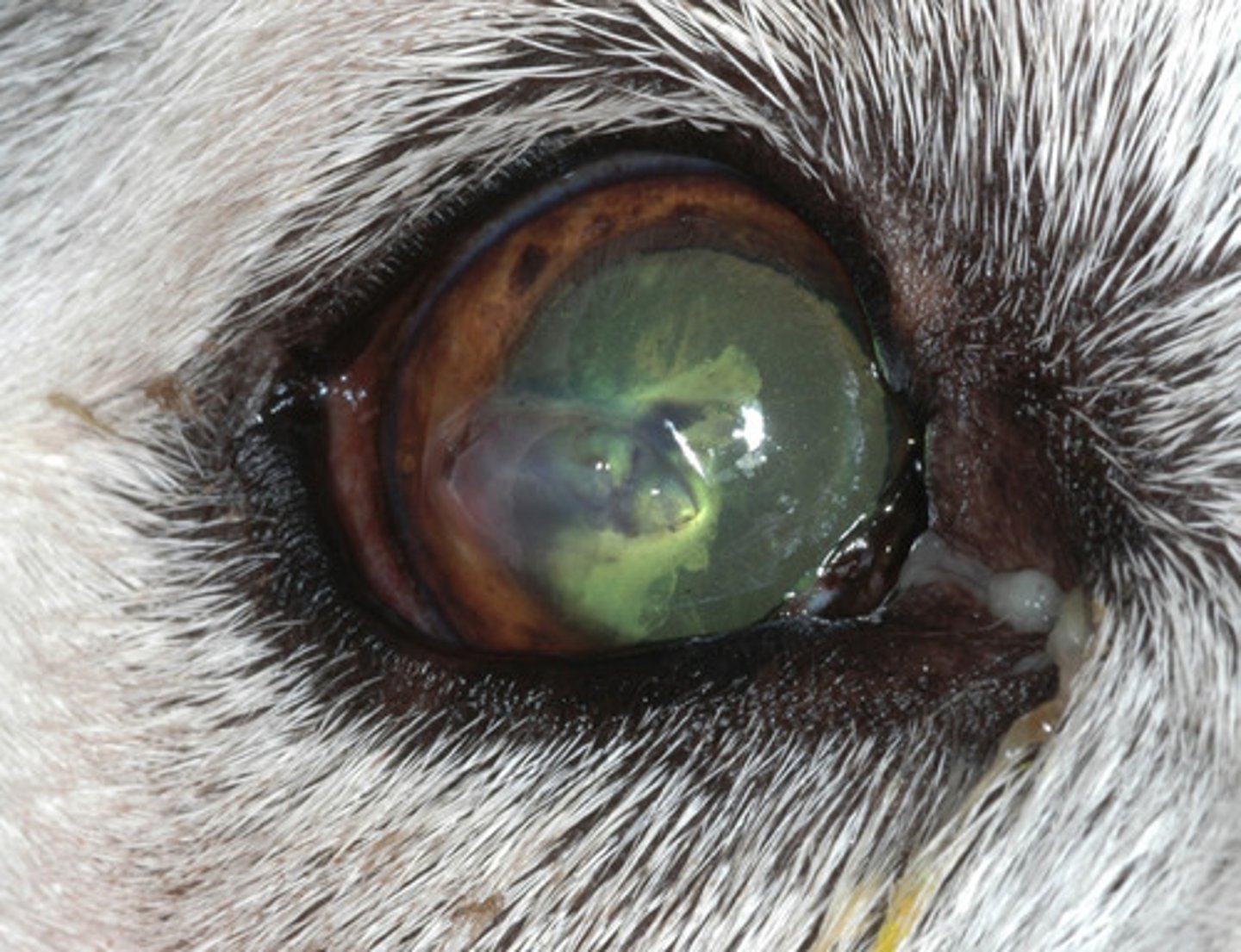
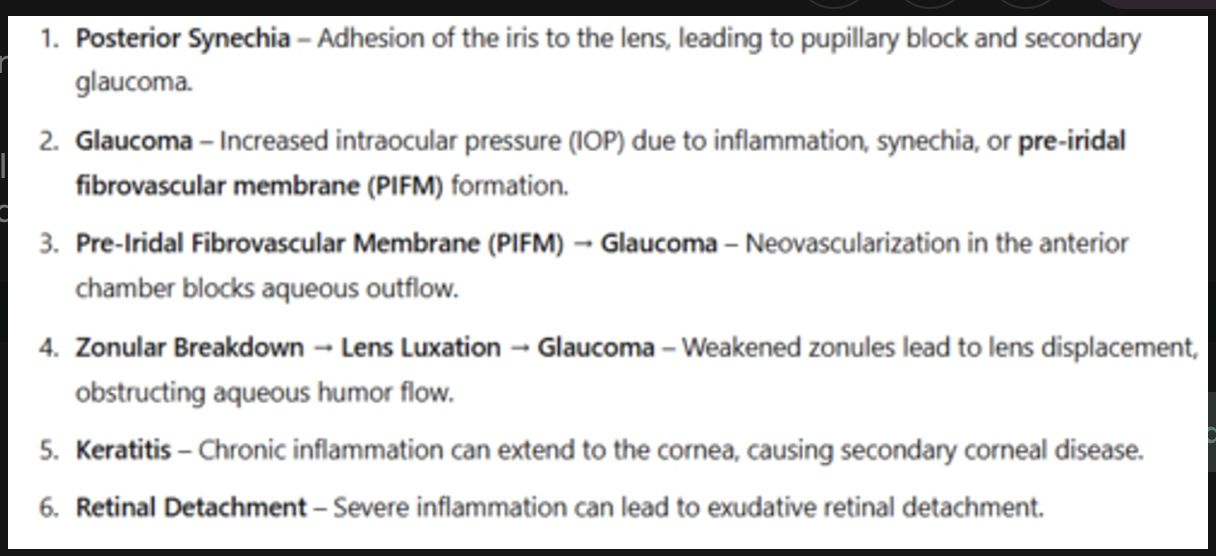
posterior synechiae
glaucoma (inflammation, synechiae, or PIFM)
pre-iridal fibrovascular membrane, glaucoma
Zonular breakdown, lens luxation, glaucoma
keratitis
retinal detachment
phacoclastic uveitis complications ?
TRUE
TF: THERE ARE NO MEDICAL TREATMENTS THAT DISSOLVE CATARACTS!!
- uveitis--> proteins leak out of lens capsule.
- More rapid = more uveitis
All cataracts are associated with some ?
surgery!
- 90-95% success for long-term vision in dogs
- highest success rate when compared to other modes of cataract management, especially when performed early in the disease process
The only way to restore vision with cataracts?

displacement of the lens from its normal position due to breakdown or rupture of the zonular fibers that suspend it.
It can be primary (inherited) or secondary (due to underlying ocular disease).
what is lens luxation?
partial displacement of the lens due to weakened or incomplete rupture of the zonular fibers, causing lens instability while remaining partially in place.
subluxation?
Hereditary zonular dysgenesis in terriers – genetic testing
Often associated with glaucoma
Primary lens luxation?
Glaucoma -> buphthalmos -> zonular breaks
Hypermature cataract à shrinking pulls on zonules and breaks them
Chronic uveitis (most common cause in cats)
Secondary lens luxation?
"Aphakic crescent"
Change in AC depth
Phacodenesis (lens movement)
Vitreous prolapse into AC
subluxation signs?
- Referral for lens removal
- May also recommend concurrent therapy for glaucoma
- Disease is usually bilateral, so discuss therapy for the second eye (early lens removal; long-term meiotic therapy to prevent anterior luxation)
What is the treatment of primary anterior lens luxation?
- Glaucoma
- Chronic uveitis
- Intraocular neoplasia
- Penetrating trauma
What are 4 secondary causes of lens luxation?
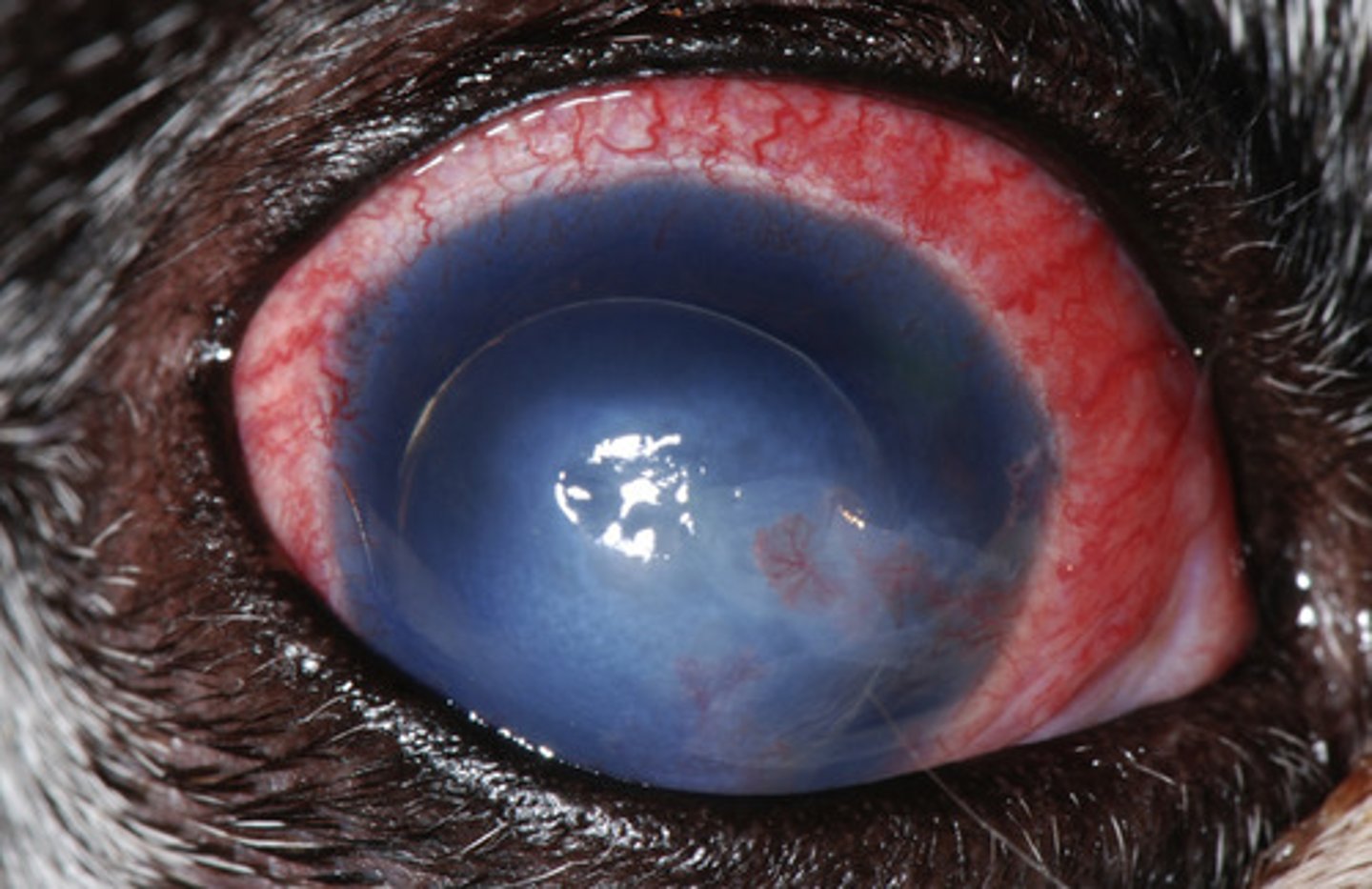
- Medical = life-long therapy with meiotic to trap lens behind the iris
- Surgical = lensectomy +/- adjunctive therapy for glaucoma
What are the treatment options for primary lens subluxation?
Lens subluxation
You see an aphakic crescent; what is the likely cause?
